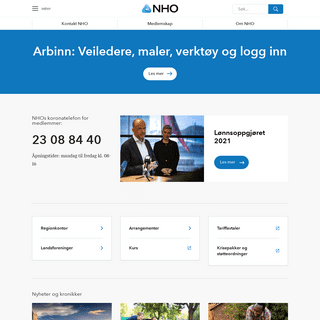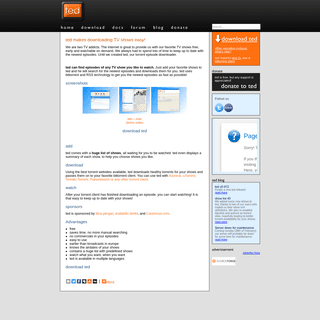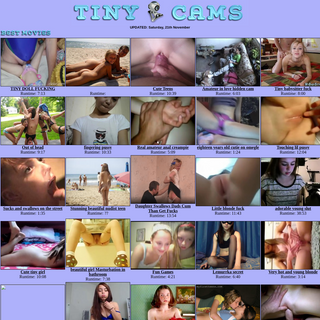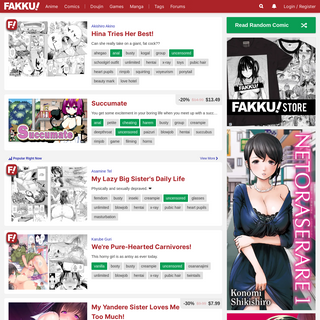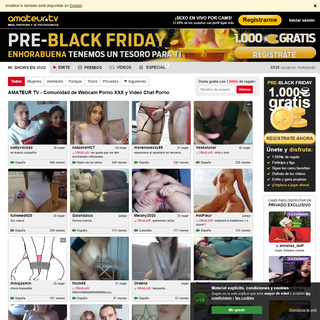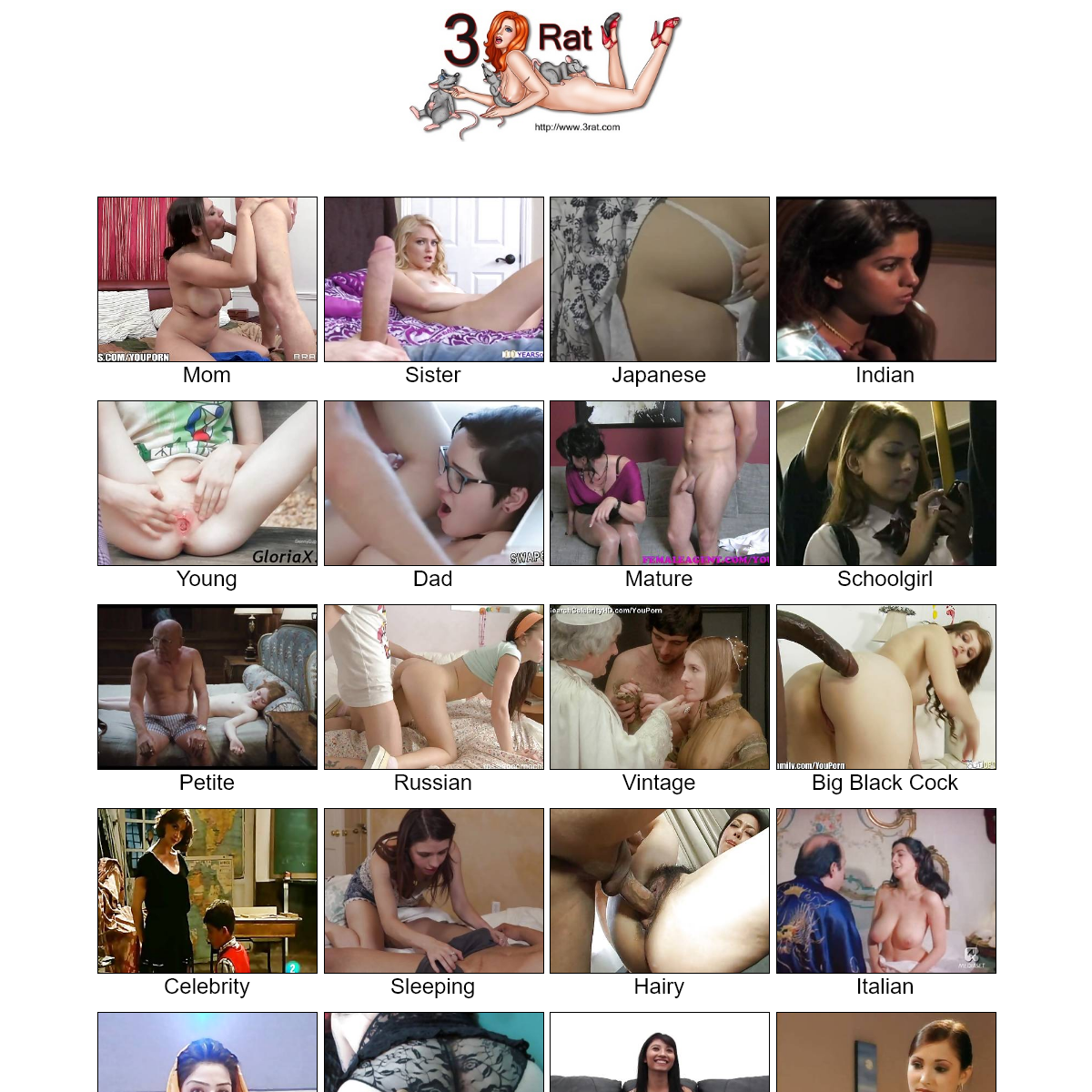Are you over 18 and want to see adult content?
More Annotations
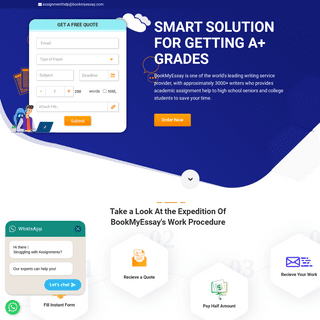
A complete backup of https://bookmyessay.com.au
Are you over 18 and want to see adult content?
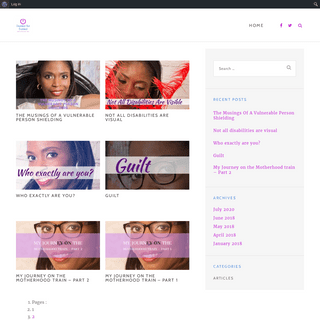
A complete backup of https://disabledbutenabled.org
Are you over 18 and want to see adult content?
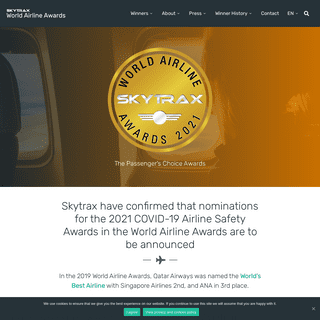
A complete backup of https://worldairlineawards.com
Are you over 18 and want to see adult content?

A complete backup of https://businessanalystlearnings.com
Are you over 18 and want to see adult content?

A complete backup of https://raksul.com
Are you over 18 and want to see adult content?

A complete backup of https://simplylogcabins.co.uk
Are you over 18 and want to see adult content?
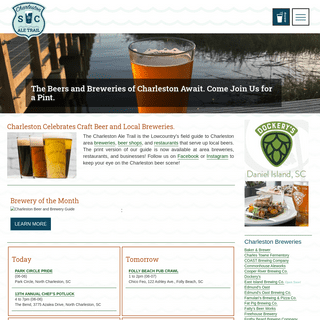
A complete backup of https://charlestonaletrail.com
Are you over 18 and want to see adult content?
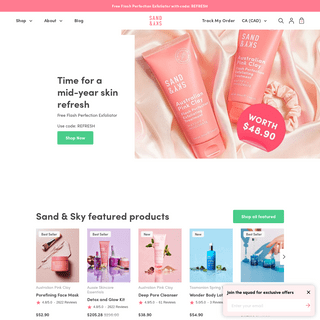
A complete backup of https://sandandsky.com
Are you over 18 and want to see adult content?
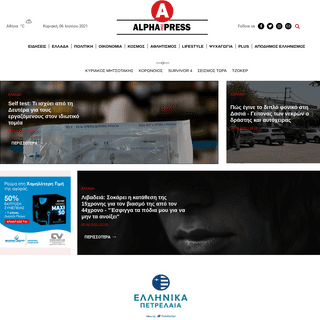
A complete backup of https://alphafreepress.gr
Are you over 18 and want to see adult content?
Favourite Annotations

A complete backup of www.www.thetabutales.com
Are you over 18 and want to see adult content?

A complete backup of www.argentinalove.net
Are you over 18 and want to see adult content?

A complete backup of www.onlytease.com
Are you over 18 and want to see adult content?
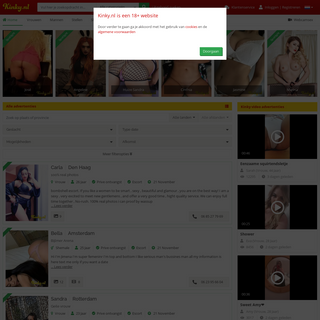
A complete backup of www.www.kinky.nl
Are you over 18 and want to see adult content?
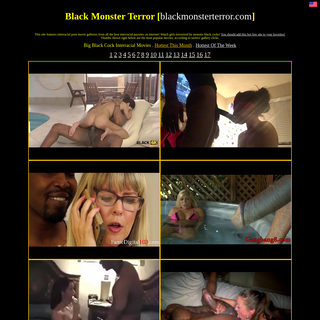
A complete backup of www.blackmonsterterror.com
Are you over 18 and want to see adult content?

A complete backup of www.www.quartier-rouge.be
Are you over 18 and want to see adult content?

A complete backup of celebfanforum.com
Are you over 18 and want to see adult content?
Text
LEARN
The CIDOC CRM is a living standard that is designed in such a way as to provide both high level information retrieval and the formulation and documentation of very specific data points and questions. The CIDOC CRM thus consists of the CRMbase standard which provides the basic classes and relations devised for the cultural heritage world.HOME | CRMSCI
The Scientific Observation Model ( CRMsci ) is a formal ontology intended to be used as a global schema for integrating metadata about scientific observation, measurements and processed data in descriptive and empirical sciences such as biodiversity, geology, geography, archaeology, cultural heritage conservation and others in research ITHOME | CRMARCHAEO
What is the CRMarchaeo? CRMarchaeo is an extension of CIDOC CRM created to support the archaeological excavation process and all the various entities and activities related to it.The model has been created starting from standards and models already in use by national and international cultural heritage institutions, and has evolved through deep analysis of existing metadata from realHOME | CRMDIG
CRM Digital is an ontology and RDF Schema to encode metadata about the steps and methods of production ("provenance") of digitization products and synthetic digital representations such as 2D, 3D or even animated Models created by various technologies. Its distinct features compared to competitive models is the complete inclusion of theinitial
HOME | CRMGEO
What is the CRMgeo? CRMgeo is a formal ontology intended to be used as a global schema for integrating spatiotemporal properties of temporal entities and persistent items.Its primary purpose is to provide a schema consistent with the CIDOC CRM to integrate geoinformation using the conceptualizations, formal definitions, encoding standards and topological relations defined by theHOME | CRMINF
What is the CRMinf? CRMinf is a formal ontology intended to be used as a global schema for integrating metadata about argumentation and inference making in descriptive and empirical sciences such as biodiversity, geology, geography, archaeology, cultural heritage, conservation, research IT environments and research data libraries.Its primary purpose is facilitating the management, integrationHOME | CRMBA
Home. What is the CRMba? The CRMba is an ontology and RDF Schema to encode metadata about the documentation of archaeological buildings (Ronzino 2015, Ronzino et al. 2015). The model was conceived to support the process of recording the evidences and the discontinuities of matter on archaeological buildings, in order to identify theevolution
HOME | FRBROO
Home. What is the FRBRoo? The FRBRoo is a formal ontology intended to capture and represent the underlying semantics of bibliographic information and to facilitate the integration, mediation, and interchange of bibliographic and museum information. The FRBR model was originally designed as an entity-relationship model by a studygroup appointed
E1 CRM ENTITY
E1 CRM Entity in Version 6.2. This class comprises all things in the universe of discourse of the CIDOC Conceptual Reference Model. It is an abstract concept providing for three general properties: 1. Identification by name or appellation, and in particular by a preferred identifier. 2. GROUPS AND RELATIONS BETWEEN PERSONS Posted by Christian-Emil on 4/8/2014 Dear all, This is not a part of the discussion in April about groups and aggregations. It is groups as a way to model relations between persons (actors). HOME | CIDOC CRMACTIVITIESRESOURCESCOMMUNITYNEWSABOUT & INFOUSE &LEARN
The CIDOC CRM is a living standard that is designed in such a way as to provide both high level information retrieval and the formulation and documentation of very specific data points and questions. The CIDOC CRM thus consists of the CRMbase standard which provides the basic classes and relations devised for the cultural heritage world.HOME | CRMSCI
The Scientific Observation Model ( CRMsci ) is a formal ontology intended to be used as a global schema for integrating metadata about scientific observation, measurements and processed data in descriptive and empirical sciences such as biodiversity, geology, geography, archaeology, cultural heritage conservation and others in research ITHOME | CRMARCHAEO
What is the CRMarchaeo? CRMarchaeo is an extension of CIDOC CRM created to support the archaeological excavation process and all the various entities and activities related to it.The model has been created starting from standards and models already in use by national and international cultural heritage institutions, and has evolved through deep analysis of existing metadata from realHOME | CRMDIG
CRM Digital is an ontology and RDF Schema to encode metadata about the steps and methods of production ("provenance") of digitization products and synthetic digital representations such as 2D, 3D or even animated Models created by various technologies. Its distinct features compared to competitive models is the complete inclusion of theinitial
HOME | CRMGEO
What is the CRMgeo? CRMgeo is a formal ontology intended to be used as a global schema for integrating spatiotemporal properties of temporal entities and persistent items.Its primary purpose is to provide a schema consistent with the CIDOC CRM to integrate geoinformation using the conceptualizations, formal definitions, encoding standards and topological relations defined by theHOME | CRMINF
What is the CRMinf? CRMinf is a formal ontology intended to be used as a global schema for integrating metadata about argumentation and inference making in descriptive and empirical sciences such as biodiversity, geology, geography, archaeology, cultural heritage, conservation, research IT environments and research data libraries.Its primary purpose is facilitating the management, integrationHOME | CRMBA
Home. What is the CRMba? The CRMba is an ontology and RDF Schema to encode metadata about the documentation of archaeological buildings (Ronzino 2015, Ronzino et al. 2015). The model was conceived to support the process of recording the evidences and the discontinuities of matter on archaeological buildings, in order to identify theevolution
HOME | FRBROO
Home. What is the FRBRoo? The FRBRoo is a formal ontology intended to capture and represent the underlying semantics of bibliographic information and to facilitate the integration, mediation, and interchange of bibliographic and museum information. The FRBR model was originally designed as an entity-relationship model by a studygroup appointed
E1 CRM ENTITY
E1 CRM Entity in Version 6.2. This class comprises all things in the universe of discourse of the CIDOC Conceptual Reference Model. It is an abstract concept providing for three general properties: 1. Identification by name or appellation, and in particular by a preferred identifier. 2. GROUPS AND RELATIONS BETWEEN PERSONS Posted by Christian-Emil on 4/8/2014 Dear all, This is not a part of the discussion in April about groups and aggregations. It is groups as a way to model relations between persons (actors). DEFINITION OF THE CIDOC CONCEPTUAL REFERENCE MODEL Definition of the CIDOC Conceptual Reference Model. Introduction This document is the formal definition of the CIDOC Conceptual Reference Model (“CRM”), a formal ontology intended to facilitate the integration, mediation and interchange of heterogeneous cultural heritage information.The CRM is the culmination of more than a decade of standards development work by the International VERSIONS OF THE CIDOC-CRM This is a revised and complete community version of the CIDOC CRM ontology. It is a stable version of the standard and can be used for implementation, referencing and any other official purpose. It represents a stable evolution of the model relative to the last official version. The document is final and will undergo no furtherchange.
CIDOC CRM TUTORIAL
CIDOC CRM Tutorial. Here you can find the official tutorial of the CIDOC CRM: CIDOC CRM Tutorial in Flash. CIDOC CRM Tutorial in ppt (with narration from Steven Stead) CIDOC CRM Tutorial (slide notes) CIDOC CRM Tutorial in mp4.E1 CRM ENTITY
E1 CRM Entity in Version 6.2. This class comprises all things in the universe of discourse of the CIDOC Conceptual Reference Model. It is an abstract concept providing for three general properties: 1. Identification by name or appellation, and in particular by a preferred identifier. 2.BEST PRACTICES
Definition of Print (visual works) from the Art and Architecture Thesaurus (AAT): “Pictorial works produced by transferring images by means of a matrix such as a plate, block, or screen, using any of various printing processes.” Thus a print is a visual work, created through a wide range of techniques that involve making an ink impression on paper or other material (etc.) based on a matrixTRANSFER OF CUSTODY
Posted by George on 6/10/2020. Dear all, In the last CRM SIG (47) we discussed issue 475 which has to do with a change to the scope note of E10 Transfer of Custody. R. Sanderson noted that the scope note seemed to contain a contradiction since the first line indicated that the transfer of custody was of 'physical possession' while the second paragraph indicated that it could be of physicalTHE CIDOC CRM
CIDOC CRM Home page . What is the CIDOC CRM. The CIDOC Conceptual Reference Model (CRM) provides definitions and a formal structure for describing the implicit and explicit concepts and relationships used in cultural heritage documentation.. The CIDOC CRM is intended to promote a shared understanding of cultural heritage information by providing a common and extensible semantic GROUPS AND RELATIONS BETWEEN PERSONS Posted by Christian-Emil on 4/8/2014 Dear all, This is not a part of the discussion in April about groups and aggregations. It is groups as a way to model relations between persons (actors). DEFINITION OF THE CIDOC CONCEPTUAL REFERENCE MODEL Definition of the CIDOC Conceptual Reference Model Introduction CIDOCCRM
FORMAL ONTOLOGY AND INFORMATION SYSTEMS ing aspect is the centrality of the role that an ontology can play in an information system, leading to the perspective of ontology-driven information systems. HOME | CIDOC CRMACTIVITIESRESOURCESCOMMUNITYNEWSABOUT & INFOUSE &LEARN
The CIDOC CRM is a living standard that is designed in such a way as to provide both high level information retrieval and the formulation and documentation of very specific data points and questions. The CIDOC CRM thus consists of the CRMbase standard which provides the basic classes and relations devised for the cultural heritage world.HOME | CRMSCI
The Scientific Observation Model ( CRMsci ) is a formal ontology intended to be used as a global schema for integrating metadata about scientific observation, measurements and processed data in descriptive and empirical sciences such as biodiversity, geology, geography, archaeology, cultural heritage conservation and others in research ITHOME | CRMDIG
CRM Digital is an ontology and RDF Schema to encode metadata about the steps and methods of production ("provenance") of digitization products and synthetic digital representations such as 2D, 3D or even animated Models created by various technologies. Its distinct features compared to competitive models is the complete inclusion of theinitial
HOME | CRMINF
What is the CRMinf? CRMinf is a formal ontology intended to be used as a global schema for integrating metadata about argumentation and inference making in descriptive and empirical sciences such as biodiversity, geology, geography, archaeology, cultural heritage, conservation, research IT environments and research data libraries.Its primary purpose is facilitating the management, integrationHOME | CRMARCHAEO
What is the CRMarchaeo? CRMarchaeo is an extension of CIDOC CRM created to support the archaeological excavation process and all the various entities and activities related to it.The model has been created starting from standards and models already in use by national and international cultural heritage institutions, and has evolved through deep analysis of existing metadata from realHOME | CRMGEO
What is the CRMgeo? CRMgeo is a formal ontology intended to be used as a global schema for integrating spatiotemporal properties of temporal entities and persistent items.Its primary purpose is to provide a schema consistent with the CIDOC CRM to integrate geoinformation using the conceptualizations, formal definitions, encoding standards and topological relations defined by theHOME | CRMBA
Home. What is the CRMba? The CRMba is an ontology and RDF Schema to encode metadata about the documentation of archaeological buildings (Ronzino 2015, Ronzino et al. 2015). The model was conceived to support the process of recording the evidences and the discontinuities of matter on archaeological buildings, in order to identify theevolution
HOME | FRBROO
Home. What is the FRBRoo? The FRBRoo is a formal ontology intended to capture and represent the underlying semantics of bibliographic information and to facilitate the integration, mediation, and interchange of bibliographic and museum information. The FRBR model was originally designed as an entity-relationship model by a studygroup appointed
TRANSFER OF CUSTODY
Posted by George on 6/10/2020. Dear all, In the last CRM SIG (47) we discussed issue 475 which has to do with a change to the scope note of E10 Transfer of Custody. R. Sanderson noted that the scope note seemed to contain a contradiction since the first line indicated that the transfer of custody was of 'physical possession' while the second paragraph indicated that it could be of physical GROUPS AND RELATIONS BETWEEN PERSONS Posted by Christian-Emil on 4/8/2014 Dear all, This is not a part of the discussion in April about groups and aggregations. It is groups as a way to model relations between persons (actors). HOME | CIDOC CRMACTIVITIESRESOURCESCOMMUNITYNEWSABOUT & INFOUSE &LEARN
The CIDOC CRM is a living standard that is designed in such a way as to provide both high level information retrieval and the formulation and documentation of very specific data points and questions. The CIDOC CRM thus consists of the CRMbase standard which provides the basic classes and relations devised for the cultural heritage world.HOME | CRMSCI
The Scientific Observation Model ( CRMsci ) is a formal ontology intended to be used as a global schema for integrating metadata about scientific observation, measurements and processed data in descriptive and empirical sciences such as biodiversity, geology, geography, archaeology, cultural heritage conservation and others in research ITHOME | CRMDIG
CRM Digital is an ontology and RDF Schema to encode metadata about the steps and methods of production ("provenance") of digitization products and synthetic digital representations such as 2D, 3D or even animated Models created by various technologies. Its distinct features compared to competitive models is the complete inclusion of theinitial
HOME | CRMINF
What is the CRMinf? CRMinf is a formal ontology intended to be used as a global schema for integrating metadata about argumentation and inference making in descriptive and empirical sciences such as biodiversity, geology, geography, archaeology, cultural heritage, conservation, research IT environments and research data libraries.Its primary purpose is facilitating the management, integrationHOME | CRMARCHAEO
What is the CRMarchaeo? CRMarchaeo is an extension of CIDOC CRM created to support the archaeological excavation process and all the various entities and activities related to it.The model has been created starting from standards and models already in use by national and international cultural heritage institutions, and has evolved through deep analysis of existing metadata from realHOME | CRMGEO
What is the CRMgeo? CRMgeo is a formal ontology intended to be used as a global schema for integrating spatiotemporal properties of temporal entities and persistent items.Its primary purpose is to provide a schema consistent with the CIDOC CRM to integrate geoinformation using the conceptualizations, formal definitions, encoding standards and topological relations defined by theHOME | CRMBA
Home. What is the CRMba? The CRMba is an ontology and RDF Schema to encode metadata about the documentation of archaeological buildings (Ronzino 2015, Ronzino et al. 2015). The model was conceived to support the process of recording the evidences and the discontinuities of matter on archaeological buildings, in order to identify theevolution
HOME | FRBROO
Home. What is the FRBRoo? The FRBRoo is a formal ontology intended to capture and represent the underlying semantics of bibliographic information and to facilitate the integration, mediation, and interchange of bibliographic and museum information. The FRBR model was originally designed as an entity-relationship model by a studygroup appointed
TRANSFER OF CUSTODY
Posted by George on 6/10/2020. Dear all, In the last CRM SIG (47) we discussed issue 475 which has to do with a change to the scope note of E10 Transfer of Custody. R. Sanderson noted that the scope note seemed to contain a contradiction since the first line indicated that the transfer of custody was of 'physical possession' while the second paragraph indicated that it could be of physical GROUPS AND RELATIONS BETWEEN PERSONS Posted by Christian-Emil on 4/8/2014 Dear all, This is not a part of the discussion in April about groups and aggregations. It is groups as a way to model relations between persons (actors). VERSIONS OF THE CIDOC-CRM This is a revised and complete community version of the CIDOC CRM ontology. It is a stable version of the standard and can be used for implementation, referencing and any other official purpose. It represents a stable evolution of the model relative to the last official version. The document is final and will undergo no furtherchange.
DEFINITION OF THE CIDOC CONCEPTUAL REFERENCE MODEL Definition of the CIDOC Conceptual Reference Model. Introduction This document is the formal definition of the CIDOC Conceptual Reference Model (“CRM”), a formal ontology intended to facilitate the integration, mediation and interchange of heterogeneous cultural heritage information.The CRM is the culmination of more than a decade of standards development work by the InternationalCIDOC CRM TUTORIAL
CIDOC CRM Tutorial. Here you can find the official tutorial of the CIDOC CRM: CIDOC CRM Tutorial in Flash. CIDOC CRM Tutorial in ppt (with narration from Steven Stead) CIDOC CRM Tutorial (slide notes) CIDOC CRM Tutorial in mp4.VERSION 7.1
Produced by the CIDOC CRM. Special Interest Group. Version 7.1. March 2021. Editors: Chryssoula Bekiari, George Bruseker, Martin Doerr, Christian-Emil Ore, Stephen Stead, Athanasios Velios. CC BY 4.0 2021 Individual Contributors to CIDOC CRM 7.1. Announcement Date : March2021.
VOLUME A: DEFINITION OF THE CIDOC CONCEPTUAL REFERENCE MODEL 6 Definition of the CIDOC Conceptual Reference Model version 7.0.1 E.S.: In Progress since P93 took out of existence (was taken out of existence by)..TRANSFER OF CUSTODY
Posted by George on 6/10/2020. Dear all, In the last CRM SIG (47) we discussed issue 475 which has to do with a change to the scope note of E10 Transfer of Custody. R. Sanderson noted that the scope note seemed to contain a contradiction since the first line indicated that the transfer of custody was of 'physical possession' while the second paragraph indicated that it could be of physical P93 TOOK OUT OF EXISTENCE This allows an “end” to be attached to any instance of E77 Persistent Item being documented i.e., instances of E70 Thing, E72 Legal Object, E39 Actor, E41 Appellation and E55 Type.TRANSLATIONS
Contact Person: Matin Doerr. Institution or working Group: FORTH-ICS. Reference to Cidoc Version: Version 5.0.2. Available Documents: Bilingual (english-chinese) edition, Monolingual (chinese) edition. Editors: Translated by Goh Ngee Hui, Reviewed by Prof Jen-Shin Hong. APPELLATIONS THAT ARE URIS In the 42nd joined meeting of the CIDOC CRM SIG and ISO/TC46/SC4/WG9 and the 35th FRBR - CIDOC CRM Harmonization meeting, the crm-sig has decided that Issue 399 is covered by the solution proposed for Issue 363 and the solution regarding the dualism of E41 Appellation and rdfs:label.The issue has been closed. FORMAL ONTOLOGY AND INFORMATION SYSTEMS ing aspect is the centrality of the role that an ontology can play in an information system, leading to the perspective of ontology-driven information systems. HOME | CIDOC CRMACTIVITIESRESOURCESCOMMUNITYNEWSABOUT & INFOUSE &LEARN
The CIDOC CRM is a living standard that is designed in such a way as to provide both high level information retrieval and the formulation and documentation of very specific data points and questions. The CIDOC CRM thus consists of the CRMbase standard which provides the basic classes and relations devised for the cultural heritage world.HOME | CRMSCI
The Scientific Observation Model ( CRMsci ) is a formal ontology intended to be used as a global schema for integrating metadata about scientific observation, measurements and processed data in descriptive and empirical sciences such as biodiversity, geology, geography, archaeology, cultural heritage conservation and others in research ITHOME | CRMARCHAEO
What is the CRMarchaeo? CRMarchaeo is an extension of CIDOC CRM created to support the archaeological excavation process and all the various entities and activities related to it.The model has been created starting from standards and models already in use by national and international cultural heritage institutions, and has evolved through deep analysis of existing metadata from realHOME | CRMDIG
CRM Digital is an ontology and RDF Schema to encode metadata about the steps and methods of production ("provenance") of digitization products and synthetic digital representations such as 2D, 3D or even animated Models created by various technologies. Its distinct features compared to competitive models is the complete inclusion of theinitial
HOME | CRMINF
What is the CRMinf? CRMinf is a formal ontology intended to be used as a global schema for integrating metadata about argumentation and inference making in descriptive and empirical sciences such as biodiversity, geology, geography, archaeology, cultural heritage, conservation, research IT environments and research data libraries.Its primary purpose is facilitating the management, integrationHOME | CRMGEO
What is the CRMgeo? CRMgeo is a formal ontology intended to be used as a global schema for integrating spatiotemporal properties of temporal entities and persistent items.Its primary purpose is to provide a schema consistent with the CIDOC CRM to integrate geoinformation using the conceptualizations, formal definitions, encoding standards and topological relations defined by theHOME | CRMBA
What is the CRMba? The CRMba is an ontology and RDF Schema to encode metadata about the documentation of archaeological buildings (Ronzino 2015, Ronzino et al. 2015).The model was conceived to support the process of recording the evidences and the discontinuities of matter on archaeological buildings, in order to identify the evolution of the structure throughout the centuries and to recordHOME | FRBROO
Home. What is the FRBRoo? The FRBRoo is a formal ontology intended to capture and represent the underlying semantics of bibliographic information and to facilitate the integration, mediation, and interchange of bibliographic and museum information. The FRBR model was originally designed as an entity-relationship model by a studygroup appointed
E1 CRM ENTITY
E1 CRM Entity in Version 6.2. This class comprises all things in the universe of discourse of the CIDOC Conceptual Reference Model. It is an abstract concept providing for three general properties: 1. Identification by name or appellation, and in particular by a preferred identifier. 2. GROUPS AND RELATIONS BETWEEN PERSONS Posted by Christian-Emil on 4/8/2014 Dear all, This is not a part of the discussion in April about groups and aggregations. It is groups as a way to model relations between persons (actors). HOME | CIDOC CRMACTIVITIESRESOURCESCOMMUNITYNEWSABOUT & INFOUSE &LEARN
The CIDOC CRM is a living standard that is designed in such a way as to provide both high level information retrieval and the formulation and documentation of very specific data points and questions. The CIDOC CRM thus consists of the CRMbase standard which provides the basic classes and relations devised for the cultural heritage world.HOME | CRMSCI
The Scientific Observation Model ( CRMsci ) is a formal ontology intended to be used as a global schema for integrating metadata about scientific observation, measurements and processed data in descriptive and empirical sciences such as biodiversity, geology, geography, archaeology, cultural heritage conservation and others in research ITHOME | CRMARCHAEO
What is the CRMarchaeo? CRMarchaeo is an extension of CIDOC CRM created to support the archaeological excavation process and all the various entities and activities related to it.The model has been created starting from standards and models already in use by national and international cultural heritage institutions, and has evolved through deep analysis of existing metadata from realHOME | CRMDIG
CRM Digital is an ontology and RDF Schema to encode metadata about the steps and methods of production ("provenance") of digitization products and synthetic digital representations such as 2D, 3D or even animated Models created by various technologies. Its distinct features compared to competitive models is the complete inclusion of theinitial
HOME | CRMINF
What is the CRMinf? CRMinf is a formal ontology intended to be used as a global schema for integrating metadata about argumentation and inference making in descriptive and empirical sciences such as biodiversity, geology, geography, archaeology, cultural heritage, conservation, research IT environments and research data libraries.Its primary purpose is facilitating the management, integrationHOME | CRMGEO
What is the CRMgeo? CRMgeo is a formal ontology intended to be used as a global schema for integrating spatiotemporal properties of temporal entities and persistent items.Its primary purpose is to provide a schema consistent with the CIDOC CRM to integrate geoinformation using the conceptualizations, formal definitions, encoding standards and topological relations defined by theHOME | CRMBA
What is the CRMba? The CRMba is an ontology and RDF Schema to encode metadata about the documentation of archaeological buildings (Ronzino 2015, Ronzino et al. 2015).The model was conceived to support the process of recording the evidences and the discontinuities of matter on archaeological buildings, in order to identify the evolution of the structure throughout the centuries and to recordHOME | FRBROO
Home. What is the FRBRoo? The FRBRoo is a formal ontology intended to capture and represent the underlying semantics of bibliographic information and to facilitate the integration, mediation, and interchange of bibliographic and museum information. The FRBR model was originally designed as an entity-relationship model by a studygroup appointed
E1 CRM ENTITY
E1 CRM Entity in Version 6.2. This class comprises all things in the universe of discourse of the CIDOC Conceptual Reference Model. It is an abstract concept providing for three general properties: 1. Identification by name or appellation, and in particular by a preferred identifier. 2. GROUPS AND RELATIONS BETWEEN PERSONS Posted by Christian-Emil on 4/8/2014 Dear all, This is not a part of the discussion in April about groups and aggregations. It is groups as a way to model relations between persons (actors). VERSIONS OF THE CIDOC-CRM This is a revised and complete community version of the CIDOC CRM ontology. It is a stable version of the standard and can be used for implementation, referencing and any other official purpose. It represents a stable evolution of the model relative to the last official version. The document is final and will undergo no furtherchange.
CIDOC CRM TUTORIAL
CIDOC CRM Tutorial. Here you can find the official tutorial of the CIDOC CRM: CIDOC CRM Tutorial in Flash. CIDOC CRM Tutorial in ppt (with narration from Steven Stead) CIDOC CRM Tutorial (slide notes) CIDOC CRM Tutorial in mp4.SHORT INTRO
Short Intro. A. The graphical representation. B. The latest cross reference manual as html hypertext / a zip file / a pdf file for downloading. C. The authoritative text, official release of CIDOC CRM. Please note that the RDF or OWL implementations is *NOT* a primarysource of
E69 DEATH | CIDOC CRM If a person is killed, the death should be documented as an instance of both E69 Death and E7 Activity. The death or perishing of other living beings should be documented as instances of E64 End ofExistence
CIDOC CRM CLASS HIERARCHY CIDOC CRM Class Hierarchy | CIDOC CRM. You are here. Home » The Model � Use&Learn » Functional Overview » CIDOC CRM Class Hierarchy.Search form.
THE CIDOC CRM
CIDOC CRM Home page . What is the CIDOC CRM. The CIDOC Conceptual Reference Model (CRM) provides definitions and a formal structure for describing the implicit and explicit concepts and relationships used in cultural heritage documentation.. The CIDOC CRM is intended to promote a shared understanding of cultural heritage information by providing a common and extensible semantic GROUPS AND RELATIONS BETWEEN PERSONS Posted by Martin on 5/8/2014. On 5/8/2014 2:28 μμ, Christian-Emil Smith Ore wrote: I think we should accept that ethnographical collections and others have a need for expressing relations betweenpersons.
P93 TOOK OUT OF EXISTENCE This allows an “end” to be attached to any instance of E77 Persistent Item being documented i.e., instances of E70 Thing, E72 Legal Object, E39 Actor, E41 Appellation and E55 Type.SHORT INTRO
Over many years, CIDOC and the CIDOC Documentation Standards Working Group (DSWG) have engaged in the creation of a general data model for museums, with a particular focus on information interchange. Until 1994 the product of these activities had been the CIDOC Relational Data Model. In the interim meeting in March 1996 in Crete, the DSWG decided to engage in an object-oriented approach in FORMAL ONTOLOGY AND INFORMATION SYSTEMS ing aspect is the centrality of the role that an ontology can play in an information system, leading to the perspective of ontology-driven information systems. HOME | CIDOC CRMACTIVITIESRESOURCESCOMMUNITYNEWSABOUT & INFOUSE &LEARN
The CIDOC CRM is a living standard that is designed in such a way as to provide both high level information retrieval and the formulation and documentation of very specific data points and questions. The CIDOC CRM thus consists of the CRMbase standard which provides the basic classes and relations devised for the cultural heritage world.HOME | CRMSCI
The Scientific Observation Model ( CRMsci ) is a formal ontology intended to be used as a global schema for integrating metadata about scientific observation, measurements and processed data in descriptive and empirical sciences such as biodiversity, geology, geography, archaeology, cultural heritage conservation and others in research ITHOME | CRMARCHAEO
What is the CRMarchaeo? CRMarchaeo is an extension of CIDOC CRM created to support the archaeological excavation process and all the various entities and activities related to it.The model has been created starting from standards and models already in use by national and international cultural heritage institutions, and has evolved through deep analysis of existing metadata from realHOME | CRMDIG
CRM Digital is an ontology and RDF Schema to encode metadata about the steps and methods of production ("provenance") of digitization products and synthetic digital representations such as 2D, 3D or even animated Models created by various technologies. Its distinct features compared to competitive models is the complete inclusion of theinitial
HOME | CRMGEO
What is the CRMgeo? CRMgeo is a formal ontology intended to be used as a global schema for integrating spatiotemporal properties of temporal entities and persistent items.Its primary purpose is to provide a schema consistent with the CIDOC CRM to integrate geoinformation using the conceptualizations, formal definitions, encoding standards and topological relations defined by theHOME | CRMBA
What is the CRMba? The CRMba is an ontology and RDF Schema to encode metadata about the documentation of archaeological buildings (Ronzino 2015, Ronzino et al. 2015).The model was conceived to support the process of recording the evidences and the discontinuities of matter on archaeological buildings, in order to identify the evolution of the structure throughout the centuries and to recordHOME | CRMINF
What is the CRMinf? CRMinf is a formal ontology intended to be used as a global schema for integrating metadata about argumentation and inference making in descriptive and empirical sciences such as biodiversity, geology, geography, archaeology, cultural heritage, conservation, research IT environments and research data libraries.Its primary purpose is facilitating the management, integrationHOME | FRBROO
Home. What is the FRBRoo? The FRBRoo is a formal ontology intended to capture and represent the underlying semantics of bibliographic information and to facilitate the integration, mediation, and interchange of bibliographic and museum information. The FRBR model was originally designed as an entity-relationship model by a studygroup appointed
GROUPS AND RELATIONS BETWEEN PERSONS Posted by Christian-Emil on 4/8/2014 Dear all, This is not a part of the discussion in April about groups and aggregations. It is groups as a way to model relations between persons (actors). E55 TYPE | CIDOC CRM E55 Type is the CRM’s interface to domain specific ontologies and thesauri. These can be represented in the CRM as subclasses of E55 Type, forming hierarchies of terms, i.e. instances of E55 Type linked via P127 has broader term (has narrower term). HOME | CIDOC CRMACTIVITIESRESOURCESCOMMUNITYNEWSABOUT & INFOUSE &LEARN
The CIDOC CRM is a living standard that is designed in such a way as to provide both high level information retrieval and the formulation and documentation of very specific data points and questions. The CIDOC CRM thus consists of the CRMbase standard which provides the basic classes and relations devised for the cultural heritage world.HOME | CRMSCI
The Scientific Observation Model ( CRMsci ) is a formal ontology intended to be used as a global schema for integrating metadata about scientific observation, measurements and processed data in descriptive and empirical sciences such as biodiversity, geology, geography, archaeology, cultural heritage conservation and others in research ITHOME | CRMARCHAEO
What is the CRMarchaeo? CRMarchaeo is an extension of CIDOC CRM created to support the archaeological excavation process and all the various entities and activities related to it.The model has been created starting from standards and models already in use by national and international cultural heritage institutions, and has evolved through deep analysis of existing metadata from realHOME | CRMDIG
CRM Digital is an ontology and RDF Schema to encode metadata about the steps and methods of production ("provenance") of digitization products and synthetic digital representations such as 2D, 3D or even animated Models created by various technologies. Its distinct features compared to competitive models is the complete inclusion of theinitial
HOME | CRMGEO
What is the CRMgeo? CRMgeo is a formal ontology intended to be used as a global schema for integrating spatiotemporal properties of temporal entities and persistent items.Its primary purpose is to provide a schema consistent with the CIDOC CRM to integrate geoinformation using the conceptualizations, formal definitions, encoding standards and topological relations defined by theHOME | CRMBA
What is the CRMba? The CRMba is an ontology and RDF Schema to encode metadata about the documentation of archaeological buildings (Ronzino 2015, Ronzino et al. 2015).The model was conceived to support the process of recording the evidences and the discontinuities of matter on archaeological buildings, in order to identify the evolution of the structure throughout the centuries and to recordHOME | CRMINF
What is the CRMinf? CRMinf is a formal ontology intended to be used as a global schema for integrating metadata about argumentation and inference making in descriptive and empirical sciences such as biodiversity, geology, geography, archaeology, cultural heritage, conservation, research IT environments and research data libraries.Its primary purpose is facilitating the management, integrationHOME | FRBROO
Home. What is the FRBRoo? The FRBRoo is a formal ontology intended to capture and represent the underlying semantics of bibliographic information and to facilitate the integration, mediation, and interchange of bibliographic and museum information. The FRBR model was originally designed as an entity-relationship model by a studygroup appointed
GROUPS AND RELATIONS BETWEEN PERSONS Posted by Christian-Emil on 4/8/2014 Dear all, This is not a part of the discussion in April about groups and aggregations. It is groups as a way to model relations between persons (actors). E55 TYPE | CIDOC CRM E55 Type is the CRM’s interface to domain specific ontologies and thesauri. These can be represented in the CRM as subclasses of E55 Type, forming hierarchies of terms, i.e. instances of E55 Type linked via P127 has broader term (has narrower term). VERSIONS OF THE CIDOC-CRM This is a revised and complete community version of the CIDOC CRM ontology. It is a stable version of the standard and can be used for implementation, referencing and any other official purpose. It represents a stable evolution of the model relative to the last official version. The document is final and will undergo no furtherchange.
HOME | CRMINF
What is the CRMinf? CRMinf is a formal ontology intended to be used as a global schema for integrating metadata about argumentation and inference making in descriptive and empirical sciences such as biodiversity, geology, geography, archaeology, cultural heritage, conservation, research IT environments and research data libraries.Its primary purpose is facilitating the management, integrationCIDOC CRM TUTORIAL
CIDOC CRM Tutorial. Here you can find the official tutorial of the CIDOC CRM: CIDOC CRM Tutorial in Flash. CIDOC CRM Tutorial in ppt (with narration from Steven Stead) CIDOC CRM Tutorial (slide notes) CIDOC CRM Tutorial in mp4.SIG MEETINGS
47th CIDOC CRM and 40th FRBR CRM. 23 - 26 June, 2020. University of Oslo, Faculty of arts, Unit for digital documention. CIDOC CRM SIG to be held Online on Zoom platform. 15 November, 2019. Agenda. Minutes. 46th CIDOC CRM and 39th FRBR CRM. 25 - 28 February, 2020.SHORT INTRO
Short Intro. A. The graphical representation. B. The latest cross reference manual as html hypertext / a zip file / a pdf file for downloading. C. The authoritative text, official release of CIDOC CRM. Please note that the RDF or OWL implementations is *NOT* a primarysource of
FUNCTIONAL OVERVIEW
Object Name and Classification Information. E1 CRM Entity, E7 Activity, E13 Attribute Assignment, E15 Identifier Assignment, E17 Type Assignment, E32 Authority Document, E41 Appellation, E42 Identifier, E55 Type. P2 has type, P37 assigned, P41 classified, P42 assigned, P71 lists, P140 assigned attribute to, E69 DEATH | CIDOC CRM If a person is killed, the death should be documented as an instance of both E69 Death and E7 Activity. The death or perishing of other living beings should be documented as instances of E64 End ofExistence
P93 TOOK OUT OF EXISTENCE This allows an “end” to be attached to any instance of E77 Persistent Item being documented i.e., instances of E70 Thing, E72 Legal Object, E39 Actor, E41 Appellation and E55 Type. DEFINITION OF THE CIDOC CONCEPTUAL REFERENCE MODEL Definition of the CIDOC Conceptual Reference Model Introduction CIDOCCRM
HOME | CIDOC CRM
Author: Dominic Created Date: 8/26/2014 6:20:40 PM HOME | CIDOC CRMACTIVITIESRESOURCESCOMMUNITYNEWSABOUT & INFOUSE &LEARN
The CIDOC CRM is a living standard that is designed in such a way as to provide both high level information retrieval and the formulation and documentation of very specific data points and questions. The CIDOC CRM thus consists of the CRMbase standard which provides the basic classes and relations devised for the cultural heritage world.HOME | CRMSCI
The Scientific Observation Model ( CRMsci ) is a formal ontology intended to be used as a global schema for integrating metadata about scientific observation, measurements and processed data in descriptive and empirical sciences such as biodiversity, geology, geography, archaeology, cultural heritage conservation and others in research ITHOME | CRMARCHAEO
What is the CRMarchaeo? CRMarchaeo is an extension of CIDOC CRM created to support the archaeological excavation process and all the various entities and activities related to it.The model has been created starting from standards and models already in use by national and international cultural heritage institutions, and has evolved through deep analysis of existing metadata from realHOME | CRMDIG
CRM Digital is an ontology and RDF Schema to encode metadata about the steps and methods of production ("provenance") of digitization products and synthetic digital representations such as 2D, 3D or even animated Models created by various technologies. Its distinct features compared to competitive models is the complete inclusion of theinitial
HOME | CRMGEO
What is the CRMgeo? CRMgeo is a formal ontology intended to be used as a global schema for integrating spatiotemporal properties of temporal entities and persistent items.Its primary purpose is to provide a schema consistent with the CIDOC CRM to integrate geoinformation using the conceptualizations, formal definitions, encoding standards and topological relations defined by theHOME | CRMBA
What is the CRMba? The CRMba is an ontology and RDF Schema to encode metadata about the documentation of archaeological buildings (Ronzino 2015, Ronzino et al. 2015).The model was conceived to support the process of recording the evidences and the discontinuities of matter on archaeological buildings, in order to identify the evolution of the structure throughout the centuries and to recordHOME | CRMINF
What is the CRMinf? CRMinf is a formal ontology intended to be used as a global schema for integrating metadata about argumentation and inference making in descriptive and empirical sciences such as biodiversity, geology, geography, archaeology, cultural heritage, conservation, research IT environments and research data libraries.Its primary purpose is facilitating the management, integrationHOME | FRBROO
Home. What is the FRBRoo? The FRBRoo is a formal ontology intended to capture and represent the underlying semantics of bibliographic information and to facilitate the integration, mediation, and interchange of bibliographic and museum information. The FRBR model was originally designed as an entity-relationship model by a studygroup appointed
GROUPS AND RELATIONS BETWEEN PERSONS Posted by Christian-Emil on 4/8/2014 Dear all, This is not a part of the discussion in April about groups and aggregations. It is groups as a way to model relations between persons (actors). E55 TYPE | CIDOC CRM E55 Type is the CRM’s interface to domain specific ontologies and thesauri. These can be represented in the CRM as subclasses of E55 Type, forming hierarchies of terms, i.e. instances of E55 Type linked via P127 has broader term (has narrower term). HOME | CIDOC CRMACTIVITIESRESOURCESCOMMUNITYNEWSABOUT & INFOUSE &LEARN
The CIDOC CRM is a living standard that is designed in such a way as to provide both high level information retrieval and the formulation and documentation of very specific data points and questions. The CIDOC CRM thus consists of the CRMbase standard which provides the basic classes and relations devised for the cultural heritage world.HOME | CRMSCI
The Scientific Observation Model ( CRMsci ) is a formal ontology intended to be used as a global schema for integrating metadata about scientific observation, measurements and processed data in descriptive and empirical sciences such as biodiversity, geology, geography, archaeology, cultural heritage conservation and others in research ITHOME | CRMARCHAEO
What is the CRMarchaeo? CRMarchaeo is an extension of CIDOC CRM created to support the archaeological excavation process and all the various entities and activities related to it.The model has been created starting from standards and models already in use by national and international cultural heritage institutions, and has evolved through deep analysis of existing metadata from realHOME | CRMDIG
CRM Digital is an ontology and RDF Schema to encode metadata about the steps and methods of production ("provenance") of digitization products and synthetic digital representations such as 2D, 3D or even animated Models created by various technologies. Its distinct features compared to competitive models is the complete inclusion of theinitial
HOME | CRMGEO
What is the CRMgeo? CRMgeo is a formal ontology intended to be used as a global schema for integrating spatiotemporal properties of temporal entities and persistent items.Its primary purpose is to provide a schema consistent with the CIDOC CRM to integrate geoinformation using the conceptualizations, formal definitions, encoding standards and topological relations defined by theHOME | CRMBA
What is the CRMba? The CRMba is an ontology and RDF Schema to encode metadata about the documentation of archaeological buildings (Ronzino 2015, Ronzino et al. 2015).The model was conceived to support the process of recording the evidences and the discontinuities of matter on archaeological buildings, in order to identify the evolution of the structure throughout the centuries and to recordHOME | CRMINF
What is the CRMinf? CRMinf is a formal ontology intended to be used as a global schema for integrating metadata about argumentation and inference making in descriptive and empirical sciences such as biodiversity, geology, geography, archaeology, cultural heritage, conservation, research IT environments and research data libraries.Its primary purpose is facilitating the management, integrationHOME | FRBROO
Home. What is the FRBRoo? The FRBRoo is a formal ontology intended to capture and represent the underlying semantics of bibliographic information and to facilitate the integration, mediation, and interchange of bibliographic and museum information. The FRBR model was originally designed as an entity-relationship model by a studygroup appointed
GROUPS AND RELATIONS BETWEEN PERSONS Posted by Christian-Emil on 4/8/2014 Dear all, This is not a part of the discussion in April about groups and aggregations. It is groups as a way to model relations between persons (actors). E55 TYPE | CIDOC CRM E55 Type is the CRM’s interface to domain specific ontologies and thesauri. These can be represented in the CRM as subclasses of E55 Type, forming hierarchies of terms, i.e. instances of E55 Type linked via P127 has broader term (has narrower term). VERSIONS OF THE CIDOC-CRM This is a revised and complete community version of the CIDOC CRM ontology. It is a stable version of the standard and can be used for implementation, referencing and any other official purpose. It represents a stable evolution of the model relative to the last official version. The document is final and will undergo no furtherchange.
HOME | CRMINF
What is the CRMinf? CRMinf is a formal ontology intended to be used as a global schema for integrating metadata about argumentation and inference making in descriptive and empirical sciences such as biodiversity, geology, geography, archaeology, cultural heritage, conservation, research IT environments and research data libraries.Its primary purpose is facilitating the management, integrationCIDOC CRM TUTORIAL
CIDOC CRM Tutorial. Here you can find the official tutorial of the CIDOC CRM: CIDOC CRM Tutorial in Flash. CIDOC CRM Tutorial in ppt (with narration from Steven Stead) CIDOC CRM Tutorial (slide notes) CIDOC CRM Tutorial in mp4.SIG MEETINGS
47th CIDOC CRM and 40th FRBR CRM. 23 - 26 June, 2020. University of Oslo, Faculty of arts, Unit for digital documention. CIDOC CRM SIG to be held Online on Zoom platform. 15 November, 2019. Agenda. Minutes. 46th CIDOC CRM and 39th FRBR CRM. 25 - 28 February, 2020.SHORT INTRO
Short Intro. A. The graphical representation. B. The latest cross reference manual as html hypertext / a zip file / a pdf file for downloading. C. The authoritative text, official release of CIDOC CRM. Please note that the RDF or OWL implementations is *NOT* a primarysource of
FUNCTIONAL OVERVIEW
Object Name and Classification Information. E1 CRM Entity, E7 Activity, E13 Attribute Assignment, E15 Identifier Assignment, E17 Type Assignment, E32 Authority Document, E41 Appellation, E42 Identifier, E55 Type. P2 has type, P37 assigned, P41 classified, P42 assigned, P71 lists, P140 assigned attribute to, E69 DEATH | CIDOC CRM If a person is killed, the death should be documented as an instance of both E69 Death and E7 Activity. The death or perishing of other living beings should be documented as instances of E64 End ofExistence
P93 TOOK OUT OF EXISTENCE This allows an “end” to be attached to any instance of E77 Persistent Item being documented i.e., instances of E70 Thing, E72 Legal Object, E39 Actor, E41 Appellation and E55 Type. DEFINITION OF THE CIDOC CONCEPTUAL REFERENCE MODEL Definition of the CIDOC Conceptual Reference Model Introduction CIDOCCRM
HOME | CIDOC CRM
Author: Dominic Created Date: 8/26/2014 6:20:40 PM* Home
* The Model
* About & Info
* Use & Learn
* Issues
* Mappings
* Compatible Models
* Use Cases
* Best Practices
* Activities
* Resources
* Community
* News
SEARCH FORM
Search
HOME
WHAT IS THE CIDOC CRM? The CIDOC Conceptual Reference Model (CRM) is a theoretical and practical tool for information integration in the field of cultural heritage. It can help researchers, administrators and the public explore complex questions with regards to our past across diverse and dispersed datasets. The CIDOC CRM achieves this by providing definitions and a formal structure for describing the implicit and explicit concepts and relationships used in cultural heritage documentation and of general interest for the querying and exploration of such data. Such models are also known as formal ontologies. These formal descriptions allow the integration of data from multiple sources in a software and schema agnostic fashion. The CIDOC CRM has been developed in a manner that is intended to promote a shared understanding of cultural heritage information by providing a common and extensible semantic framework for evidence-based cultural heritage information integration. It is intended to be a common language for domain experts and implementers to formulate requirements for information systems and to serve as a guide for good practice of conceptual modelling. In this way, it can provide the "semantic glue" needed to mediate between different sources of cultural heritage information, such as that published by museums, libraries and archives. The CIDOC CRM is the outcome of over 20 years of development and maintenance work, originally by the CIDOC Documentation Standards Working Group and, presently, by the CIDOC CRM SIG, both of which are working groups of CIDOC. Since December, 2006, it has been recognized as an official ISO standard. This status was renewed in 2014 and can be found at ISO 21127:2014. The CIDOC CRM is a living standard that is designed in such a way as to provide both high level information retrieval and the formulation and documentation of very specific data points and questions. The CIDOC CRM thus consists of the CRMbase standard which provides the basic classes and relations devised for the cultural heritage world. This base ontology is complemented by a series of modular extensions to the basic model. Such extensions are designed to support different types of specialized research questions and documentation such as bibliographic documentation or geoinformatics. The CIDOC CRM extensions are developed in partnership with the research communities in question. These extensions are formulated in a manner that is harmonized with the base ontology such that data expressed in any extension is compatible with the base system of concepts and relations. This harmonized development process leads to a high level of information integrity and integration not available in other information systems.WHO WE ARE
CIDOC CRM is developed by the CIDOC CRM Special Interest Group. This is a volunteer community dedicated to the development and maintenance of a common standard for integrating cultural heritage data. The SIG works under the aegis of CIDOC, the International Council for Documentation, which, in turn, is a committee of the International Council of Museums (ICOM). Membership in the CIDOC CRM SIG is on an institutional basis and its membership includes private and public institutions associated with the research and documentation of the human past. The work of the SIG is done on a volunteer basis and funding comes from the contributions in kind of the member institutions in supporting the work of their staff in contributing to this project. The SIG meets three or four times a year, the meetings being hosted by the member institutions of the SIG. As an active working group of ICOM, the SIG also participates in the annual CIDOC conference and the triannual meetings of ICOM. The present membership of the CIDOC CRM SIG can be consulted here.
WHAT'S NEW?
version 7.0.1 of CIDOC CRM has been uploaded The agenda for 48th CIDOC CRM SIG meeting has been uploaded version 1.0 of CRMtex has been uploaded MOST RECENT VERSIONSCurrent version
Last official versionCHOOSE A SHORTCUT
Compatible models & Collaborations Link to old CIDOC CRM websiteNext meeting
Use cases
CIDOC CRM Tutorial
CIDOC CRM Website designs and logos CRM SIG mailing listSite Support
FAQ
LOGIN FOR EDITING
Username *
Password *
THE MODEL
* About & Info
* Short Intro
* Scope
* Recommendations
* References
* Critics
* Important Theories* Use&Learn
* Short Intro
* User Guidance
* Methodology
* Tutorials
* Functional Overview * Last Official Release* Concept Search
* Issues
* Short Intro
* Issue Formulation
* Issue Processing
* CRM SIG Archive
* Mappings
* Short Intro
* Mapping Methods
* Mapping Tools
* Mapping Memory
* Reports about Mappings* Compatible Models
* Short Intro
* Models
* Use Cases
* Short Intro
* Use Cases
RESOURCES
* Related Activities* Versions
* References
* Presentations
* Technical Papers
* Tutorials
* Critics
* Important Theories* Publications
* Mappings
* Compatible Models
* Translations
* FAQ
* Meeting Contributions* Minutes
* Issues
* CRM SIG Archive
* Meeting ContributionsACTIVITIES
* Short Intro
* SIG Meetings
* Minutes
* Workshops
* Related ActivitiesPEOPLE
* Short Intro
* Related Stakeholders* SIG Members
* Hosts
NEWS
HOME
Details
Copyright © 2024 ArchiveBay.com. All rights reserved. Terms of Use | Privacy Policy | DMCA | 2021 | Feedback | Advertising | RSS 2.0

